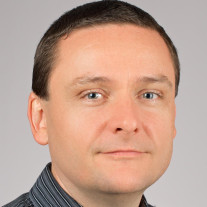Education and Training Series #97: Overview and Update of MSR activities within GIF
This webinar is part of a series hosted by the GIF Education and Training Working Group since 2016.
The recording and the presentation made during this webinar are now accessible on this webpage.
Who should attend?
Policymakers, industry professionals, regulators, researchers, students, the general public.
About the "GIF Education and Training" Webinars
These webinars, organised by the GIF Education and Training Working Group are streamed live monthly. The recordings and slide decks are accessible after the webinar on this website. These webinars cover a very broad range of technical and policy related topics. At the end of 2023 they have been viewed by more than 15000 people (approximately half of the views during the live streams and the other half views being of the archives on the public GIF website). In total, the GIF webinars have reached Generation IV enthusiasts, scientists, and engineers in more than 80 countries.
These webinars are organised and hosted by the GIF Education and Training Working Group (ETWG).
About this Webinar
Molten Salt Reactors (MSR) belong to the most revolutionary concepts within the six GIF systems. They utilize fuel in form of molten salts with enormous designing freedom. The aim of this presentation is to introduce MSR as an entire category of reactors and address the evolution of MSR concepts starting from the pioneering time at Oak Ridge National Laboratory up to the current worldwide research.
The liquid fuel state provides many advantages and challenges. As other GIF systems, MSR has a potential to close the fuel cycle and minimize so the existing spent fuel amount and maximize the natural resources utilization. Opposite to other systems, MSR can be operated as a breeder reactor with negative coolant density effect and the fission products separation can take place partially or fully in situ. The common issue of fuel fabrication with higher actinides is replaced in MSR by challenges associated to solubility limits and lowering of melting temperature. The resistance of solid fuel cladding to irradiation and corrosion is in many MSRs replaced by resistance to corrosion and embrittlement of the reactor vessel. Fission gasses, which traditionally pressurize the fuel pin are in MSR released to the cover gas or dedicated off-gas system. Fission products, which do not form halides can precipitate on the walls enveloping the salt. In many MSR concepts, the liquid fuel carries the energy produced in the reactor core. Hence, the salt properties determine not only the fuel behavior, but also the heat exchange properties. Based on these differences, the presentation will introduce the MSR research conducted by GIF MSR member countries.
Dr. Patricia Paviet from PNNL, USA, member of GIF ETWG and initiator of this webinar series, will facilitate this webinar.
Presentation made during the webinar
Meet the presenter

Dr
Jiri KREPEL
Dr Jiri Krepel is a senior scientist in Advanced Nuclear Systems group of Laboratory for Scientific Computing at PSI Center for Scientific Computing, Theory and Data in Switzerland. He earned his PhD in 2006 at the Czech Technical University in Prague / Helmholtz-Zentrum Dresden-Rossendorf in Germany for his thesis entitled “Dynamics of Molten Salt Reactors”. Dr Krepel is the coordinator of the PSI MSR research at Paul Scherrer Institut and responsible for fuel cycle analysis and related safety parameters of Gen IV reactors. He is also the chairman of the Steering Committee of GIF MSR project and co-developer of the IAEA MSR taxonomy. Dr Krepel has experience in the neutronics of liquid-metal and gas-cooled fast reactors and in neutronics and transient analysis of thermal and fast MSRs.